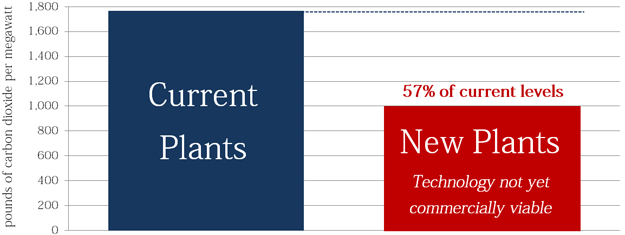EPA’s Red Tape on GHG Begins
In 2008, then-Senator Obama said, “if somebody wants to build a coal plant, they can - it's just that it will bankrupt them, because they are going to be charged a huge sum for all that greenhouse gas that's being emitted.”
This week, President Obama’ Environmental Protection Agency continued to make energy more expensive for families by proposing the first-ever national standards to reduce greenhouse gas (GHG) emissions from new power plants. The new requirements will, according to the EPA, end the construction of new coal-fired power plants.
History of EPA Regulation of GHG Emissions
The EPA had never regulated the emission of GHGs until a group of states, local governments, and private organizations concerned about climate change sued in 2007 to force the agency to regulate the carbon dioxide emissions of motor vehicles.
In that court case, Massachusetts v. EPA, the EPA argued that it could not regulate GHG emissions because CAA authorizes the EPA to regulate “air pollutants” only, and CO2 occurs naturally in the air. The Supreme Court rejected the EPA’s argument and held that the definition of “air pollutant” in the CAA “embraces all airborne compounds of whatever stripe.” If the EPA finds the emission of any airborne compound endangers the public’s health, it is required, by statute, to regulate it.
In 2009, the EPA determined that GHG emissions did endanger the public’s health by leading to climate change, and it began preparing to regulate the carbon emissions of new power plants. On March 27, 2012, the EPA proposed the first of these regulations.
Proposed Rule: Standards for GHG Emissions for New Stationary Sources
This rule is the first in EPA’s regulatory agenda to fulfill the agency’s December 2010 settlement agreement on GHG emissions. The regulatory requirements of the proposed rule mandate new power plants to emit CO2 at a rate no greater than that of a natural gas fired power plant. Natural gas plants emit about 57 percent as much GHG as coal plants.

The agency’s Regulatory Impact Analysis states: “Most new capacity is projected as a mix of wind and natural gas in response to the competitive marketplace for fuels and other energy policies (such as tax credits and state renewable portfolio standards). These scenarios … serve to further confirm the high likelihood that no new coal capacity is likely to be built by 2020 in baseline forecasts.”
The supporting analysis for the rule fails adequately to address the potential for natural gas prices to rise significantly because of increased demand. This could expose families and businesses to higher energy prices.
One Paragraph on Jobs in a 108-page Impact Analysis
In its economic analysis, the EPA claims the rule will not have any impacts on the price of electricity, employment or labor markets, or the U.S. economy.
The 108-page Regulatory Impact Analysis includes only one paragraph addressing the economic impact of the rule:
“EPA typically presents the economic impacts to secondary markets (e.g., changes in industrial markets resulting from changes in electricity prices) and impacts to employment or labor markets associated with proposed rules based on the estimated compliance costs and other energy impacts, which serve as an input to such analyses. However, since the EPA does not forecast a change in behavior relative to the baseline in response to this proposed rule, there are no notable macroeconomic or employment impacts expected as a result of this proposed rule.”
The facts of EPA’s job-killing policies tell a different story:
- From 2008 to 2011, net electric power generation from coal dropped from nearly two billion megawatt hours to 1.7 billion – a 13 percent decline. In that time, U.S. residential electricity prices rose by about five percent.
- Utility companies have announced they plan to shut down more than 300 boilers, representing more than 42 gigawatts of electricity generation — nearly 13 percent of the electricity produced by America’s coal-fired power plants.
- The new rule, and others that the Obama Administration plans to enact, will raise electricity costs for consumers and hurt middle- and low-income families.
- More than 130,000 coal mining jobs in 25 states are directly harmed by the EPA’s assault on coal.
Next Article Previous Article
